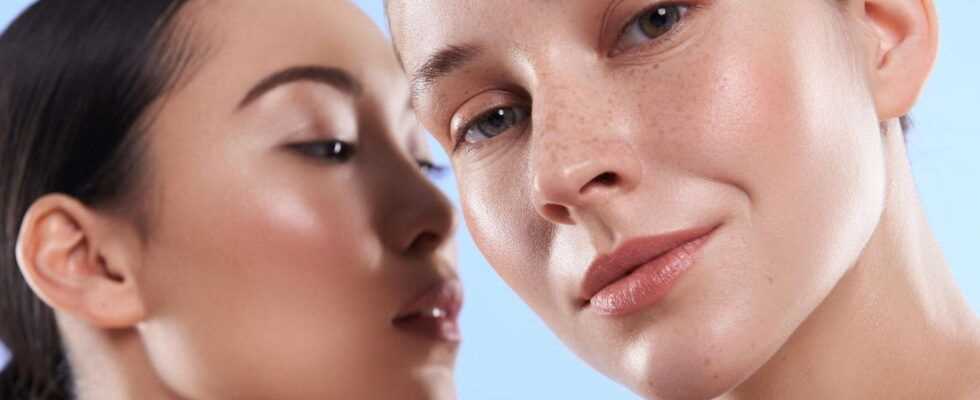We tested it
Slugging: that's behind the beauty trend!
© Shutterstock
Smooth, plump and radiant skin – yes, please! The Korean skincare trend "Slugging" is supposed to transform our skin into a delicate dream overnight. And that's only thanks to a product that you probably already have at home.
From Melanie Wenzke
We can sing a song about pale, dry skin, especially in winter! Slugging, on the other hand, is said to be a real miracle weapon. Just like sheet masks or double cleansing, the skincare trend originally comes from Korea. But what does that mean exactly now?
Just no snails!
The term comes from the English "slug", which translates as snail, but luckily it has nothing to do with it! "Slugging" could therefore be translated as "leaving a trail of slime". And that pretty much describes how the skin feels after application: the whole face is thickly covered with Vaseline. Rumor has it that Marilyn Monroe was also a big fan of this all-purpose weapon.
This is how "slugging" works
Our skin is constantly losing water, which can make it less elastic and dry. We use creams and serums to compensate for this loss of moisture. Vaseline differs from this: It acts like a kind of sealant, so that hardly any water / moisture can evaporate overnight. This process is called occlusion: the moisture is locked in, which prevents water loss.
You could say that the petroleum jelly locks the skin care products in on your skin. This principle is already popular in the treatment of scars: if Vaseline is applied over the scar cream, it supports its effectiveness.
If you don't like the greasy feeling of Vaseline, you can also use more pleasant textures, such as Auqaphore from Eucerin (approx. 10 euros) or the Repair Ointment from Alfason (approx. 15 euros). Shea butter or ointments are also suitable, but do not lock in the moisture as well as Vasline. It is best to "slug" in the evening as the last step in your care routine.
These skin types should stay away from it
This method of locking in moisture is particularly suitable for people with very dry skin. For skin types that are struggling with acne, oily skin or pimples, we strongly advise against a comprehensive application.
We tested the method and we are really excited about the results! But here less is more: Covering your face with a small amount of petroleum jelly once a week is enough. It is better to use "spot slugging" by applying Vaseline specifically to dry areas. If used too often, the pores can clog. That is why cleaning before and after the application is very important! Because bacteria are also trapped, which can lead to inflammation.
This is what your ultimate moisturizing slugging routine could look like
1. Mild cleansing
It is the key to clean skin: The most effective way to remove make-up and dirt is with an oily cleanser.
Take The Day Off Balm from Clinique (approx. 30 euros), cleaning oil from Balea (approx. 3 euros)
(2. Toner)
It has a calming effect and balances your skin. In addition, your moisturizing serum can penetrate deeper on wet skin.
Skin Recovery Facial Toner from Paula's Choice (approx. 24 euros), Balea Med Ultra Sensitive Facial Toner (approx. 3 euros).
3. Moisturizing serum
They can bind water in the skin and thereby increase the moisture content.
Hyalu B5 serum concentrate from La Roche Posay (approx. 30 euros), 120h Hypersleep moisturizing serum from No Cosmetics (approx. 15 euros
4. Face oil (optional)
Certain oils strengthen the skin's barrier, which means that moisture can be better retained in the skin.
Jojoba oil from Colibri Skincare (approx. 20 euros), "B" Oil from The Ordinary (approx. 12 euros)
5. Night cream
Creams also have the ability to protect the skin from water loss.
Hyaluronic night cream from Junglück (approx. 30 euros), soothing night care for sensitive skin from Nivea (approx. 5 euros)
6. Slug product (Occlusive balm)
Vaseline, Aquaphore from Eucerin (approx. 10 euros)
